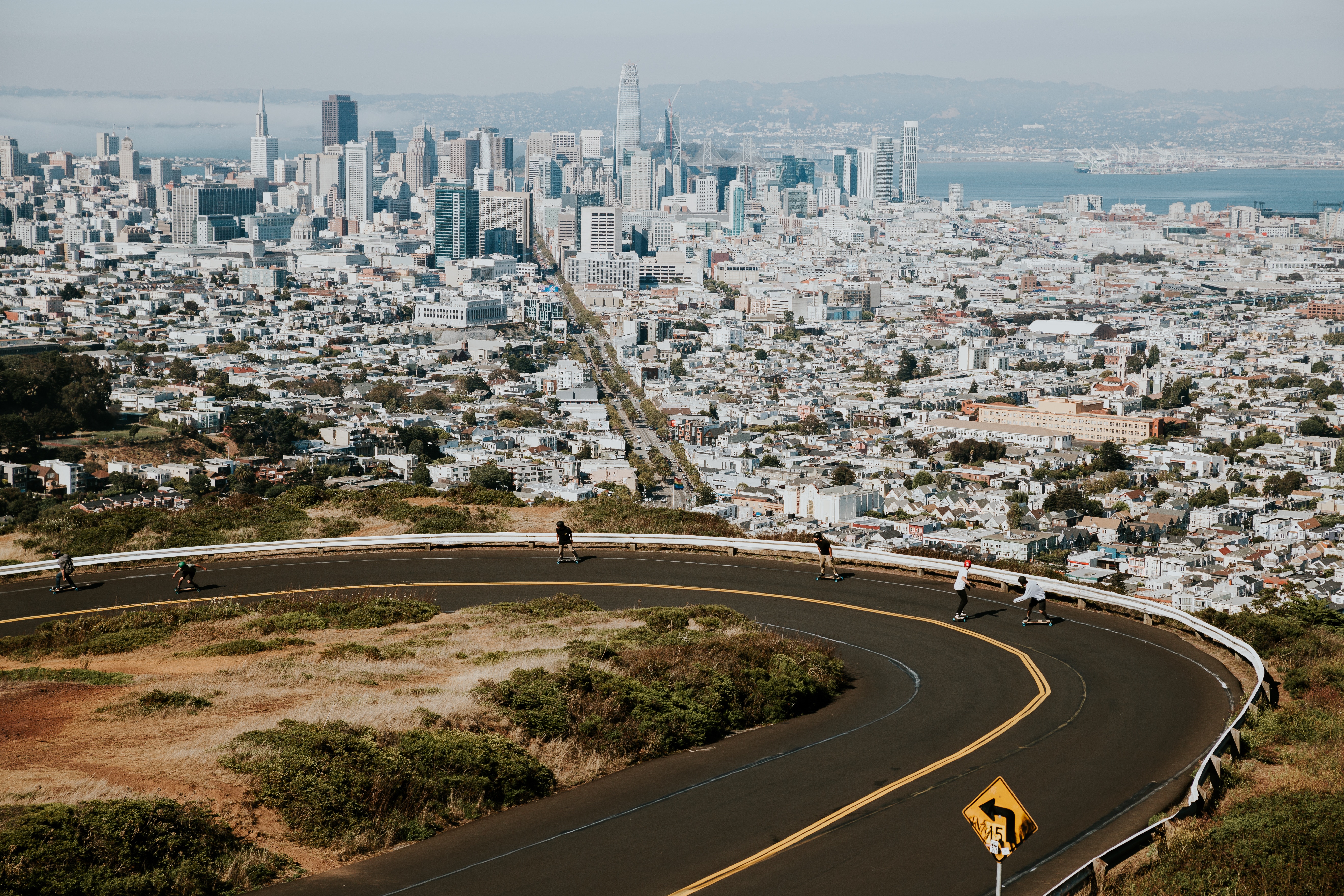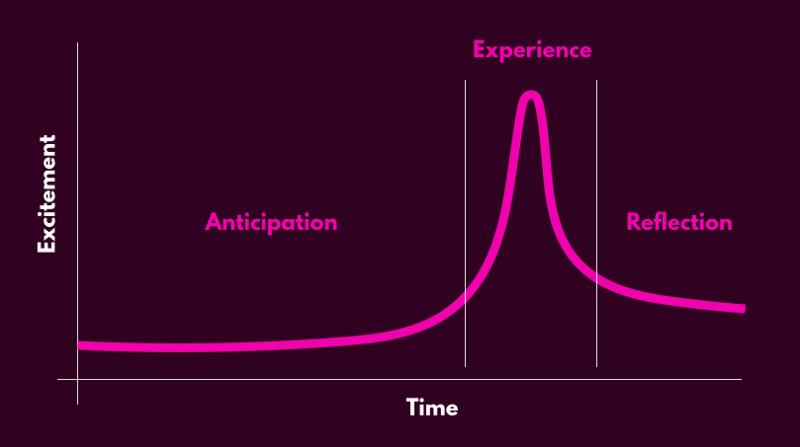Deluxe Experiences

The X is for experience: Dealing with experiences has become an essential part of design as a discipline. Physical products and graphical interfaces start playing a subordinate role - for a good reason. Studies found that younger generations (read: millennials) consume less and less physical products. It’s not about stuff anymore, it’s about experiences like travel, Netflix or games.
Experience Design (XD), originally a discipline in economic psychology, has diverged into different fields: There is user experience design (UX) for interactive products, consumer experience design (CX) for commercial flows and Human Experience Design (HX) for long-lasting human-brand relationships.
Even more than a physical product could, a deluxe experience has the ability to get stuck people’s minds and being associated with your brand. But how do experiences even work?
How do Experiences work?
Picture a roller coaster ride: Before you hop on, you will have to wait for ages in the line. You hear the screaming and shouting from the ride above you – a ride that will only take 90 seconds or so. And whoever buys these photos? Well, that is all part of the experience.
Experiences come in three phases: The anticipation phase, the experience phase, and the reflection phase.
During the anticipation phase, you are preparing for the experience. you’ll be waiting for it, you’ll be looking forward to it. It’s like the line at the Apple Store on iPhone day, the online tracking for your Amazon delivery, the countdown before New Years, the rotating popcorn bag in the microwave. Anticipation is important for experiences: It gives us the ability to get in the right mood for the actual experience, it prepares us and gives the experiences more space.
The experience phase is what we consider to be the actual experience. It’s the first bite of hot popcorn, the moment we turn on our new Apple device, the first kiss in the new year. The experience phase might be really short, but it’s what we will remember later.
The reflection phase is probably the most important phase: It’s the time after the experience, in which we relive, retell and reflect what just happened. It’s the release of endorphins after having sex, all the times you brag about how awesome jet black as a color is, the story you will tell your kids years after the roller coaster ride.

An experience can only live because of what’s coming right before and after it. Experiences need to be awaited and reflected on. This is how experiences work.
Deluxe Experiences Don’t Just Happen
The difficult and great thing about experiences is that they very hard to abstract. The good old “My audience is older, so I need to make the text bigger” or “My audience is younger, so I make the colors brighter” doesn’t apply for experience design. Experiences are totally affective and subjective. As a designer, you are the experiencer. By experiencing, you have an influence on the designer and vice versa.
To create a Deluxe Experience, you need to take full control over the experience and all aspects of its influence on the human being who is experiencing it. Deluxe experiences are carefully crafted.
It’s easy to think of a Deluxe Experience as something very big like a visit to Disneyland, a stadium rock concert or a parachute jump. Deluxe Experiences can be something really small, like an unboxing of a new device or Swipe-and-Match on Tinder. But how to get there?
The 5 Principles of Deluxe Experiences
For designing Deluxe Experiences, I found the five principles of Deluxe Experiences very helpful:
Deluxe Experiences are inclusive. You can understand them without any inside knowledge, they don’t have a steep learning curve. You don’t need to have special abilities to get a Deluxe experience, and the absence of certain abilities does not keep you from having the experience. Think about unboxing your iPhone: if you can’t see the device, you can still feel the embossed box, hear how the lid slowly slides off sucking out the vacuum from inside the carton and smell the newness of your untouched device.
Deluxe Experiences work as expected. That is a big one: Whenever we’re trying to make something new, it is very likely that we break something we have already learned, resulting in frustration and denial. Deluxe experiences don’t do that – They give you the feedback you expect, they don’t stun you with a different outcome. They don’t leave you in the rain, not knowing what to do (See principle 1). Take the Tinder-Swipe-and-Match: When it was introduced, the gesture was so new and unheard of that the designers had to add 2 huge buttons on the bottom of the interface, that did exactly the same thing – and took out the frustration of not getting the UI design.
Deluxe Experiences add value. We get something out of them, we have a good reason to experience them. This can be meaningful feedback, information that we get or a thing we create. Deluxe experiences are no-nonsense.
Deluxe Experiences are surprising, playful and lustful. That’s a tricky one: While in #2 I say that a Deluxe experience should work like expected, it should also add a surprising or playful element to it. This can be a delightful detail, a slight insecurity resulting in a higher hormone output or something that gets added on top.
Deluxe Experiences give room for reflexion. Just like the photo you get after a roller coaster ride, a Deluxe experience has a built-in reflexion phase. Depending on the dimension of the experience, this can reach from giving a little time after the experience to realize what just happened to give a physical manifestation of the experience.
I’m sure we all have a Deluxe Experience in our head – they surround us and delight us every day. They don’t just happen – they are carefully crafted. Why shouldn’t your brand have a Deluxe experience? Time to get started!